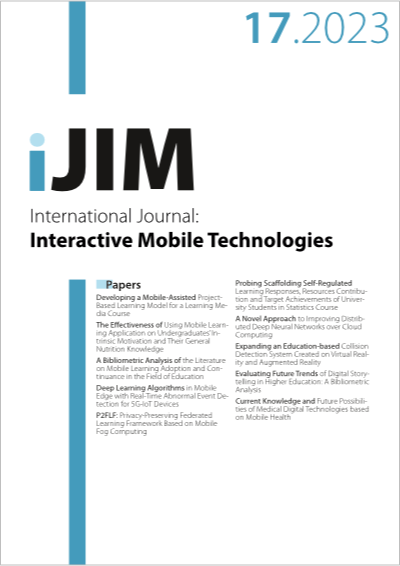Developing a Mobile-Assisted Project-Based Learning Model for a Learning Media Course
DOI:
https://doi.org/10.3991/ijim.v17i17.41705Keywords:
learning media course, project-based learning, mobile learning technology, m-learning, mobile-assisted project-based learningAbstract
The ability to create and use effective learning media is critical to students’ academic success. Therefore, a customized learning model for a learning media course needs to be developed to enhance learning effectiveness. The mobile-assisted project-based learning (PjBL) model was developed under the guidance of the Dick and Carey model to improve student learning outcomes in a learning media course. The validity test conducted for this model received a good score from expert validators, with an average score of 4.50 for usability and presentation, 4.56 for display, and 4.53 for language. The effectiveness test showed a high average n-gain of 0.83 in the one-to-one trial, 0.74 in the small group trial, and 0.73 in the large group trial. In addition, student feedback on the practicality of the mobile-assisted PjBL model was very good, with an average score of 4.31, or 86% of the ideal score. Based on these results, it is highly recommended to implement the mobile-supported PjBL model when teaching a learning media course.
Downloads
Published
How to Cite
Issue
Section
License
Copyright (c) 2023 Hamdan Husein Batubara, Hasni Noor, Pahri Siregar, Al Ihwanah, Miftahul Husni, Djoko Rohadi Wibowo, Ahmad Maghfurin, Dessy Noor Ariani

This work is licensed under a Creative Commons Attribution 4.0 International License.


